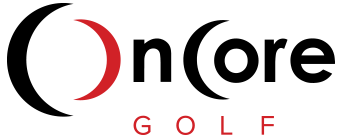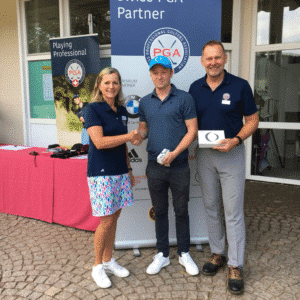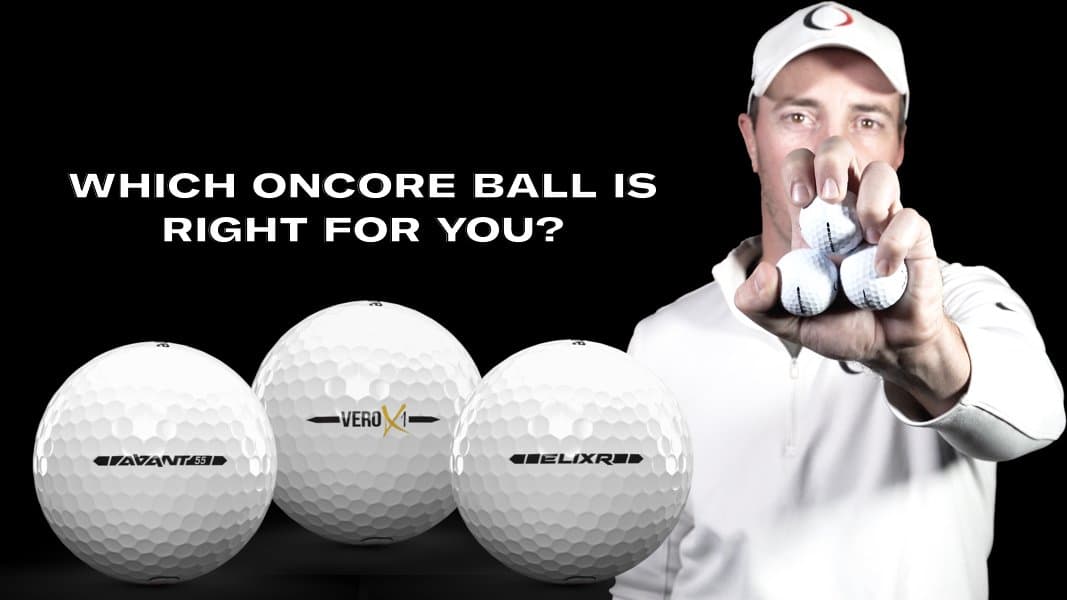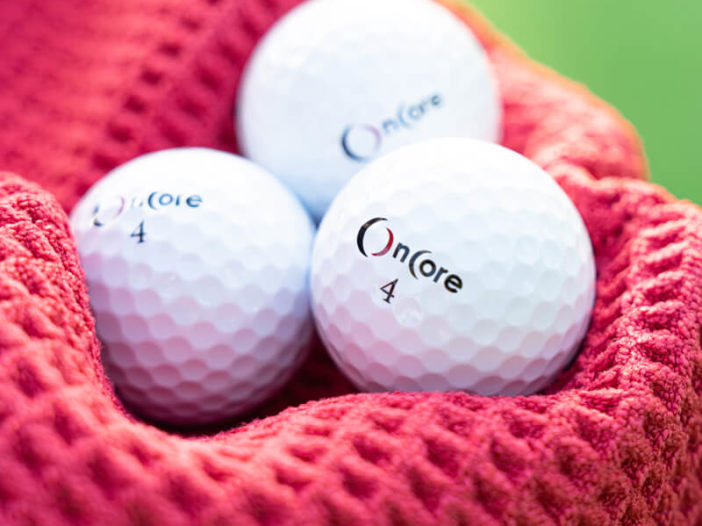
What do recreational “bogey golfers” and plus-five handicap PGA TOUR players have in common?
They all want to hit the ball farther, especially when it comes to their drivers. Anyone who’s followed Bryson DeChambeau’s plight to get bigger, faster, stronger and longer is all too familiar with this recent trend.
The reality, however, is the distance race has been going on for years. And it’s fueled a frenzy in the golf ball category with nearly every major manufacturer churning out a “distance” golf ball with accompanying claims of prodigious length.
After all, if every golfer wants to hit it farther, shouldn’t every golfer play one of these distance balls? To steal a phrase from ESPN College Game Day host emeritus Lee Corso, “not so fast my friend.” Or should we say, not so far?
Expert Opinion
Before we dive in, we asked OnCore’s Senior Technical Advisor John Calabria for his definition of a distance ball. Calabria’s name is on patents for 12 golf balls and clubs. He engineered brand names like the Titleist Professional, Maxfli Revolution and Noodle as well as many other high-performance balls throughout his illustrious career.
“Generally, distance balls were two-piece, high-compression balls with Surlyn covers of varying hardness,” Calabria says. “However, these days there are many lower to mid-compression balls that are positioned as distance balls but can have some forgiveness around the greens. For many, the choice comes down to price vs performance and overall feel.”
For high-compression distance balls to deliver a benefit off the tee, Calabria says they need to be compressed at impact by the driver clubface. Average golfers (14-15 handicaps according to the USGA’s GHIN network) have swing speeds closer to 90 mph according to a recent Trackman survey, which may not be enough to get the distance they want.
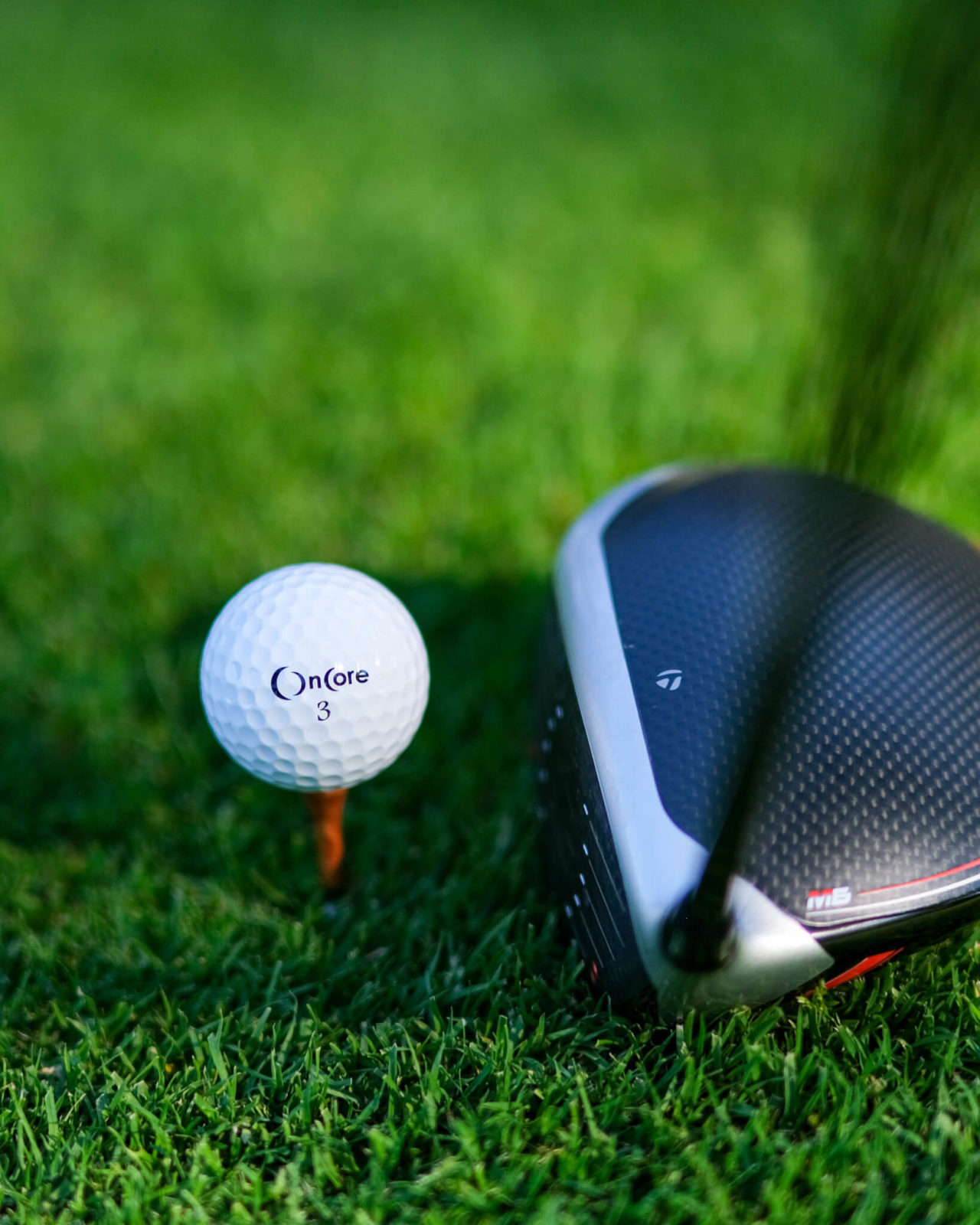
The Trade-Off
We’ve established that your average golfer isn’t swinging fast enough to reap the benefits of a distance ball. “No biggie,” you might say, “what’s the worst that could happen?”
Well, golfers with low or moderate swing speeds playing a high-compression distance ball will invariably sacrifice control on approach shots and around the greens.
“High-compression two-piece balls don’t offer much control around the greens,” Calabria says. “With the right swing speed, you might add some distance, but you have to ask yourself what you’re giving up. It’s a compromise.”
From its onset, OnCore’s central mission has been to develop golf balls that don’t force golfers to make trade-offs. Founders Keith Blakely, Bret Blakely and Steve Coulton have been dedicated to bringing players of all levels the best of both worlds – distance and control.
And they’ve unfailingly leaned into cutting-edge technology to do it.
“Our proprietary perimeter-weighting allows us to deliver distinctly different golf balls, each which help golfers hit it longer and straighter while providing more control on approach, chip and pitch shots,” says Bret Blakely. “We love to see high-handicap, low swing speed golfers out there maximizing distance off the tee and dialing in their iron and wedge games right along with the low-handicap, high swing speed players.”
The OnCore Difference
Case in point, OnCore’s AVANT 55 is a very soft, low-compression two-piece ball designed for high-handicap, low swing speed golfers. Normally, this type of ball might cause golfers to sacrifice distance off the tee. But AVANT 55’s high coefficient of restitution (COR) core generates high ball velocity and low spin which also reduces side spin for longer, straighter shots.
“The key to AVANT 55 is its core,” says Calabria. “That is the engine. We make the AVANT 55’s core to provide excellent speed for the average golfer which translates into more distance. The way it is constructed, it provides great rebound and the size of the core is larger than you’d normally find at that compression category.”
On the other end of the spectrum, the VERO X1 is OnCore’s premier four-piece Tour-caliber ball with a compression in the range of 80-84 and a thin urethane cover. VERO X1 features enhanced perimeter weighting that reduces side spin by up to 60% in independent testing.
Golfers with high swing speeds will hit it longer and straighter with VERO X1, and will also have spin, control and feel on approach shots and around the greens.
“The holy grail of golf balls used to be having the spin and control of a high-performance ball with the distance of a two-piece ball, and that’s what we have with VERO X1,” Calabria says. “Golfers used to choose between distance or control but that’s not the case anymore.”
OnCore also offers golfers the best of both worlds via its flagship ELIXR. A three-piece ball that’s a two-time Golf Digest Hotlist Gold winner, ELIXR features a cast urethane cover, 318 dimple pattern and compression just below VERO X1 (80).
Ready to find the perfect OnCore ball for your game? Take the next step with our Ball Fitting Assessment and get fit today.
